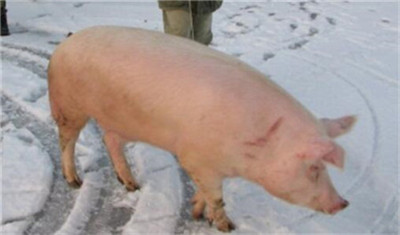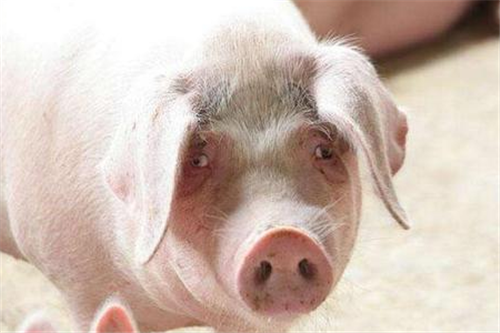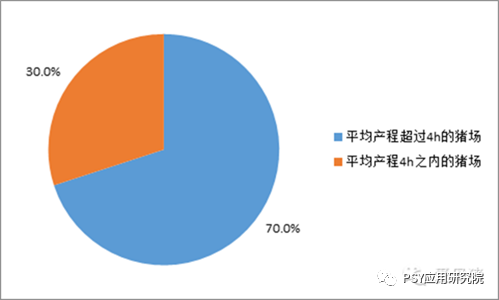What are the reasons for repeated infertility in sows? How to treat it?
The long-term mating infertility of sows is the phenomenon that breeding pigs and sows can have reproductive dysfunction, resulting in the inability of sows to reproduce. There are many reasons for long-term mating infertility in sows, after the discovery of this situation, the relevant pig farm breeders should find the cause in time, symptomatic treatment, and solve the problem.
What are the reasons for repeated infertility in sows?
The main causes of repeated infertility in sows are as follows:
1. Reproductive tract disease. Ovarian disease, abnormal ovulation, inappropriate mating, reproductive tract inflammation, or reproductive function decline. Reproductive tract inflammation is one of the main factors affecting the conception rate of sows. It is reported that more than 50% of repeated infertility in sows are caused by uterine inflammation, such as lax artificial insemination, improper delivery and midwifery, damage to the birth canal or poor hygiene in the delivery room, and the probability of infection will increase. In pig production, there are usually obvious clinical symptoms to attract attention, recessive uterine inflammation is often ignored, do not do any treatment will blindly breed, obviously easy to lead to a decline in conception rate, or even repeated infertility.
two。 The sow is too fat. Due to the strong appetite of sows, rapid weight gain and unlimited feeding, overweight eggs and other reproductive organs of sows are surrounded by a lot of fat. Sows ovulate less or do not ovulate, resulting in repeated infertility or anestrus in sows.
3. Infectious disease. Infectious diseases such as parvovirus disease, atypical swine fever, Japanese encephalitis, brucellosis, porcine reproductive and respiratory disorders syndrome, streptococcosis, parasitic diseases such as toxoplasmosis, leptospirosis, metabolic diseases, such as protein deficiency, vitamin deficiency, selenium deficiency, etc., can cause repeated infertility, abortion or stillbirth.
4. Aspergillus toxin. In recent years, it has been found that an important cause of repeated mating infertility in sows is aspergillus toxin, which is mainly caused by corn mildew deterioration, including aflatoxin, fumigate toxin, Fusarium toxin and gibberellin.
5. Non-sow factor. If the boar sperm used for breeding is small or of poor quality, it will also lead to the infertility of sows.

How to treat repeated infertility in sows?
1. It is suggested that the sows with normal estrus cycle and repeated infertility, especially the sows returning to estrus 21 or 25 days after mating, should take the following measures: clean uterine treatment 2-4 hours before estrus mating. 1.5 grams of penicillin will be dissolved in 20 ml of normal saline and injected into the reproductive tract to purify the uterus, referred to as Jinggong. Sows were injected with LRH-A310~20 micrograms intramuscularly at 24-36 hours after estrus. Two-step interval insemination was taken 1-2 hours after injection, with an interval of 4-8 hours. This method can make the conception rate of sows reach 95.23%. The treatment with drug Jinggong and LRH-A3 is still infertile and the reproductive function is declining, so the sows that lose the value of breeding should be eliminated in time.
two。 Antibiotic treatment of infertility due to ovarian cyst in sows: irregular or non-estrus in sows, or continuous estrus but repeated infertility, swelling and enlargement of labia, frequent excretion of mucus in the vagina, etc., luteinizing hormone can be used, each intramuscular injection of 50 100 units, or each intramuscular injection of chorionic gonadotropin 500 / 1000 units.
3. For estrus sows, within 1-2 hours before timely insemination, 90 ~ 1.8 million international units of erythromycin were injected directly into the uterus of human sows, and then inseminated with drugs once per insemination. The pregnancy rate of sows can reach more than 92%.
4. For sows with ovarian dysfunction and strong physique, normal estrus, normal vaginal secretions and overall health. Can take medicinal Siwu decoction addition and subtraction method: Angelica 10 grams, cooked 10 grams, Radix Paeoniae Rubra 10 grams, Yangqi stone 8 grams, Psoralea corylifolia 8 grams, wolfberry 5 grams, Rhizoma Cyperi 15 grams. Decoction in water for 3 times, 1 dose per day, mixed with feed, taking 3 doses continuously 2-5 days before the next estrus can be cured.
What are the methods of sow breeding?
There are three breeding methods for sows, namely, natural mating, artificial assisted breeding and artificial insemination.
1. Natural mating. Let the boar mate directly with the sow. Usually the boars and sows are raised separately, and when the sows are in estrus, the boars that meet the plan are selected to go to the breeding pen together and let them finish the breeding automatically and then rush back to the original column. This method is relatively simple, but the hygiene and effect of mating are not very good.
2. Artificial assisted mating. It refers to the method of disinfecting the reproductive organs of boars and sows and taking necessary auxiliary measures to help boars successfully complete mating. This breeding method can strictly select and match, which is beneficial to breed improvement, expand the utilization rate of breeding boars, control the breeding times of breeding boars, and prolong the service life of breeding boars. In the implementation of artificial assisted mating, the selected breeding boars and estrus sows should be rushed to the breeding column and carried out 2 hours before and after feeding. First, scrub the vulva of sows and around the foreskin of boars with 0.1% potassium permanganate aqueous solution, and then wipe it with clean water. When the boar climbs up the back of the sow, pull the sow's tail to one side, hold the penis in the boar foreskin with the other hand, guide the penis into the vagina of the sow, and then observe the twitch of the boar to judge whether the boar ejaculates and the length of ejaculation time. After the breeding of the sow and the sow, give the sow a slap on the hip to make it contract suddenly to prevent semen reflux. During artificial assisted mating, there should be little difference in body size and body weight between boars and sows, so as to facilitate the smooth progress of mating. Mating records should be made in time as the basis for correct feeding and management in the next stage. The breeders who carry out auxiliary mating should stand next to the back end of the sows and move along with the advance and retreat of the boars and sows to ensure that they will not be bruised and trampled by the boars and sows, and can help the boars and sows complete the mating smoothly.
3. Artificial insemination. It is the most widely used, effective and economical breeding method, and it is one of the most effective technical measures to accelerate the development of pig industry.
Related
- On the eggshell is a badge full of pride. British Poultry Egg Market and Consumer observation
- British study: 72% of Britons are willing to buy native eggs raised by insects
- Guidelines for friendly egg production revised the increase of space in chicken sheds can not be forced to change feathers and lay eggs.
- Risk of delay in customs clearance Australia suspends lobster exports to China
- Pig semen-the Vector of virus Transmission (4)
- Pig semen-the Vector of virus Transmission (3)
- Five common causes of difficult control of classical swine fever in clinic and their countermeasures
- Foot-and-mouth disease is the most effective way to prevent it!
- PED is the number one killer of piglets and has to be guarded against in autumn and winter.
- What is "yellow fat pig"? Have you ever heard the pig collector talk about "yellow fat pig"?



